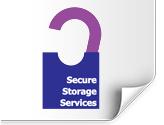Evolution of Document Scanners Back

As Britain’s top document scanning company we are often asked by our customers: ‘How does document scanning technology work?’ To give this question the respect it deserves, we have decided to dedicate an entire blog post to the matter.
What is a document scanner?
A document scanner converts words and images contained on paper or film into a digital equivalent. Scanning technology achieves this end through the use of optical technology. Since paper is perishable, the scanning process helps preserve information well into the future. Nowadays, document scanners are relatively ubiquitous. You will find document scanning technology in office buildings from Tokyo to New York. We feel it fair to say that document scanners are as popular as the printer and personal computer. Without access to accurate and high quality document scanning technology, many documents would simply be destroyed during the aging process. Not to mention the many thousands of hours that would be required in order to manually copy documents by hand!
A brief history of document scanners
Scanners we take for granted today were unheard of only a short century ago. In fact, document scanners owe their supremacy to early telegraphy and facsimile technologies developed by Italian Giovanni Caselli and later by Frenchman Édouard Belin. Western Union, an American company, improved this European technology during the 1920s. This involved sending images and text via telephone or telegraph. The scanning unit contained a ‘rotating drum’ with an attached photo detector. This forerunner to the modern document scanner was in use right up to the end of the twentieth century, particularly in the newspaper industry.
Types of scanner
Now we outline each of major type of scanner available on the market today:
Drum scanners
Drum scanners represent early scanning technology. Drum scanners are facilitated by a technology known as Photomultiplier Tubes (PMT). PMT allows images to be captured and then rendered. The tube acts as a vacuum. The tube is typically filled with gas. This gas filled tube is sensitive to different varieties of light (i.e. ultraviolet, visible and near-infrared light).
Flatbed scanner
Flatbed scanners make use of Contact Image Sensor (CIS) or Charged Coupled Device (CCD) technology:
- Charged Coupled Device (CCD) – The document sits on a glass pane. A bright light source is shot onto the entire document and a moving CCD scanner captures the document’s content. The CCD scanner contains three sensors lined up in a row. Each sensor has a filter. One for green, one for red and one for blue
- Contact Image Sensor (CIS) – CIS also makes use of a mobile scanner fitted with a filter for green, blue and red light. A blue LED light illuminates the document during scanning. A monochromatic photodiode array sits under the scanner’s rod lens in order to collect light and render the image
Hand-held scanners
The hand-held scanner travels over the document you intended to scan using motion generated through your hand movements. Hand-held scanners are much more likely to distort the image you intend to capture, and so a flat-bed scanner should be preferred whenever possible.
3D scanners
Unlike traditional document scanners, 3D scanners are not limited to paper documents. 3D scanners are able to scan so-called ‘real-world’ objects into computerised three-dimensional objects. A ‘3D printer’ is then able to pre-produce physical replicas of the original real-world object.
Smartphone scanners
The twenty-first century has seen an explosion in the number and variety of ‘mobile applications’. Scanning technology is no exception, and many smartphones now have the ability to scan documents and objects. Smartphones utilise their inbuilt camera to first capture an image of an object or document. A custom built application (or ‘app’ for short) then post-processes the photo into a digital PDF document. Many of these apps automatically store the digital document onto a ‘cloud’ storage platform such as Evernote or Dropbox, or alternatively send the document to an email address.
That's it for now!
I hope you enjoyed this post on the evolution of document scanners. My name is Adam White and I am a reprographics manager at Secure Storage Services in Liverpool. Feel free to connect with me on LinkedIn.

 Based in Liverpool and Wirral, we provide document storage, scanning and shredding services nationwide.
Based in Liverpool and Wirral, we provide document storage, scanning and shredding services nationwide.

